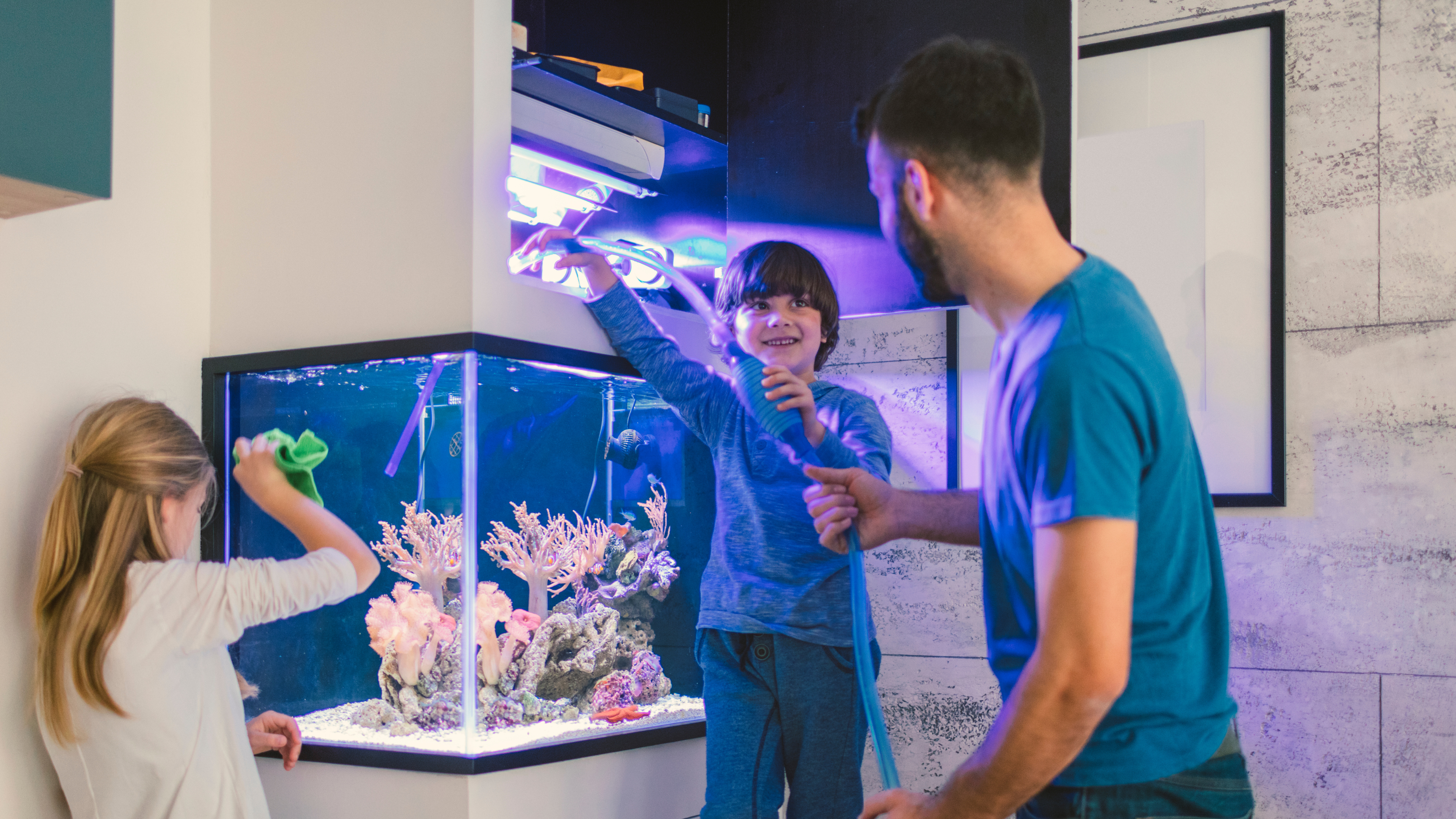Starting a reef tank can be an incredibly rewarding experience, but it requires careful planning and attention to detail to ensure the health and well-being of your aquatic inhabitants. This guide will walk you through the essentials of setting up your first reef tank, from selecting the right equipment to maintaining optimal conditions.
1. Planning and Preparation
Research
Before diving into the setup process, invest time in research. Learn about the different types of reef tanks, the species of fish and corals you want to keep, and the specific requirements for each.
Budget
Reef tanks can be expensive to set up and maintain. Plan your budget carefully, considering the cost of equipment, livestock, maintenance, and ongoing supplies like salt and test kits.
2. Equipment Needed
Tank
Choose a tank size that fits your space and budget. Larger tanks (30 gallons or more) are generally more stable and easier to maintain than smaller ones. Ensure the tank is made of high-quality glass or acrylic.
Filtration System
A good filtration system is crucial for maintaining water quality. Common options include:
- Protein Skimmers: Remove organic waste before it breaks down.
- Canister Filters: Provide mechanical and chemical filtration.
- Sump Systems: Offer additional water volume and space for equipment.
Lighting
Proper lighting is essential for coral health. LED lights are popular due to their efficiency and customizable spectrum. Ensure your lights provide adequate intensity and spectrum for the corals you plan to keep.
Heating and Cooling
Maintain a stable temperature (usually between 75-80°F). Invest in a reliable heater and consider a chiller if you live in a warm climate.
Circulation
Water movement is vital for gas exchange and coral health. Use powerheads or wave makers to ensure adequate flow throughout the tank.
Substrate and Live Rock
Use a reef-friendly substrate like aragonite sand. Live rock provides biological filtration and habitat for beneficial bacteria and marine life.
3. Setting Up the Tank
Placement
Place your tank on a sturdy stand, away from direct sunlight and drafts. Ensure the location can support the weight of the filled tank.
Adding Substrate and Live Rock
Rinse the substrate thoroughly before adding it to the tank. Arrange live rock to create a stable structure with plenty of hiding spots and swimming spaces.
Filling the Tank
Mix saltwater using a high-quality marine salt mix and RO/DI (reverse osmosis/deionized) water. Fill the tank slowly to avoid disturbing the substrate and rock.
Cycling the Tank
Cycling establishes beneficial bacteria that process waste. Add an ammonia source (like a raw shrimp or bottled ammonia) and monitor water parameters. The cycle can take several weeks; be patient and do not add livestock until ammonia and nitrite levels are zero.
4. Adding Livestock
Stocking Plan
Plan your livestock carefully to avoid overstocking and compatibility issues. Start with hardy species like clownfish or soft corals.
Acclimation
Acclimate new arrivals slowly to prevent shock. Use the drip acclimation method: gradually introduce tank water to the bag over an hour before transferring the livestock.
5. Maintenance
Water Testing
Regularly test water parameters (ammonia, nitrite, nitrate, pH, salinity, calcium, alkalinity, magnesium) and keep a log. Stable parameters are crucial for a healthy reef.
Water Changes
Perform regular water changes (10-20% weekly) to maintain water quality. Use pre-mixed saltwater with the same salinity and temperature as your tank.
Cleaning
Clean the tank glass, equipment, and substrate regularly. Remove algae manually or with cleanup crew members like snails and hermit crabs.
6. Tips and Advice
- Patience is Key: Rushing the process can lead to failures. Take your time with cycling and stocking.
- Invest in Quality Equipment: Reliable equipment can save you headaches and money in the long run.
- Research Each Species: Ensure you know the specific needs of each fish and coral you add to your tank.
- Join a Community: Online forums and local clubs can be great resources for advice and support.
- Observe Regularly: Spend time observing your tank daily to catch any issues early.
Conclusion
Setting up a reef tank is a commitment, but with careful planning and maintenance, it can be a stunning and rewarding addition to your home. Enjoy the process of creating and nurturing your own piece of the ocean, and remember that the health and happiness of your aquatic inhabitants depend on your diligence and care.
For more detailed information and community support, consider visiting reputable reef tank forums and websites like Reef Central or Marine Depot.
Happy reefing!

